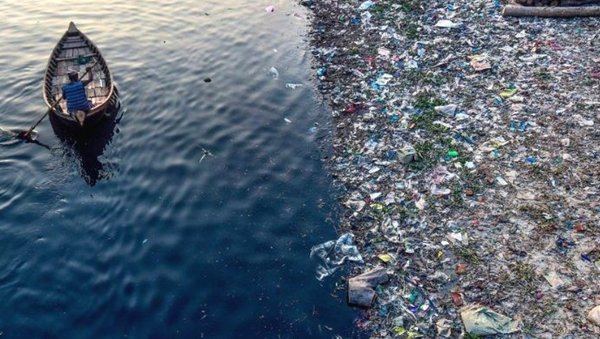The health of our oceans is essential to the well-being of our planet. However, they face growing challenges: warming and acidification from climate change, plastic pollution that is choking marine life, habitat destruction, rising sea levels and unsustainable fishing practices. All of these problems can weaken marine ecosystems, put species at risk, and disrupt coastal economies that depend on healthy oceans. Immediate solutions are needed to mitigate these impacts and protect our marine resources for future generations.
Many of these problems are man-made– For example, habitat destruction caused by activities such as coastal development and bottom trawling, and reduction of fish stocks caused by overfishing. The threat of rising sea levels due to climate change and melting polar ice is also a major concern for coastal communities. Regardless, it is clear that widespread problems threaten marine biodiversity and affect coastal communities around the world. Fortunately, in the face of these challenges, innovative technologies such as 3D printing are becoming useful tools in the fight for ocean conservation.


Image source:BBC
3D printing offers unique solutions to these ocean sustainability challenges. Unlike traditional manufacturing methods, which often generate large amounts of waste, 3D printing enables precise, personalized production. This has sparked interest in using additive manufacturing and other 3D technologies, such as 3D scanning, to solve environmental problems, including those related to oceans. By turning to additive manufacturing, different groups are not only finding creative ways to solve ocean conservation problems, but they are also able to do so in a more environmentally friendly way.
Coral reef restoration
Coral reefs are among the most biologically diverse ecosystems. However, they are increasingly threatened by climate change, pollution and physical damage. WillIntegrating 3D printing into coral reef restoration is a promising approach to mitigating these threats. Companies such as D-Shape and Archireef are experts in this field, using 3D printing to create artificial reef structures that mimic natural coral formations. These structures provide important habitat for marine life and promote the growth of coral larvae, promoting the recovery and resilience of coral reefs. Additive manufacturing could play a role in mitigating threats to coral reefs, 14% of which have disappeared since 2001.
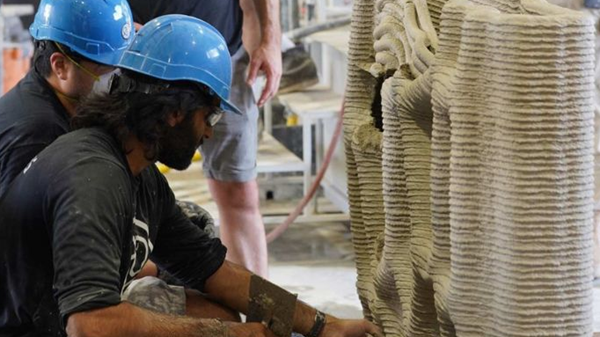

Photo credit:Kind designs
In fact, creating new coral reefs is an extremely important mission. The destruction of coral reefs means the death of entire ecosystems, leading to the extinction of some animals and long-term consequences for the planet, including setbacks in health care. However, rebuilding coral reefs is difficult because they must be as attractive as natural coral reefs. This is where additive manufacturing comes in.
The flexibility and geometric complexity offered by additive manufacturing make it possible to create more interesting and dynamic structures than traditional methods. Additionally, because the destruction of coral reefs is an environmental problem, many people are concerned.Passionate about 3D printing, he can use natural materials like terracotta to create coral reefs while reducing waste. These are the main reasons for the adoption of 3D printing in this field.
Coral reef restoration through additive manufacturing could also serve other purposes. For example, a Miami-based tech companyKind Designs turned to 3D printing to restore coral reefs. However, what sets it apart is the innovative way it applies this technology to address multiple environmental challenges simultaneously.
Aware of the dual threat posed by coastal erosion and the decline of marine biodiversity,Kind Designs has developed a revolutionary solution: 3D printed living dikes. Unlike traditional concrete sea walls that often worsen environmental degradation, Kind Designs’ living sea walls provide a strong barrier against rising sea levels while acting as a vibrant marine ecosystem, similar to a coral reef. Designed to mimic natural marine habitats such as mangrove roots, these seawalls provide shelter and breeding grounds for a variety of aquatic species, helping to build ecological resilience.
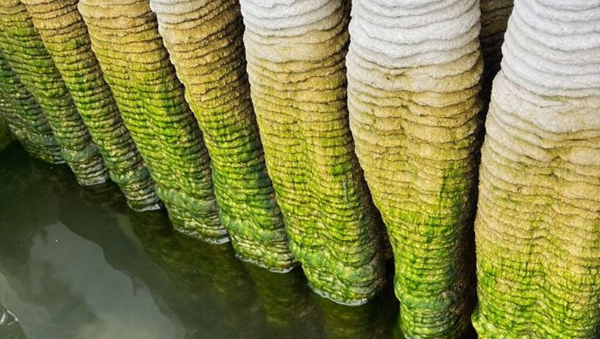

Living embankment designed by Kind Designs (Image source: Kind Designs)
Anya Freeman, founder and CEO of Kind Designs, added: “These walls are structurally identical to traditional seawalls: the same PSI, the same reinforcement and the same installation method. However, due to biomimetic material composition and design principles, these walls can also. serve as marine habitats. They feature large cavities that protect marine life from predators, and their roughness and texture are ideal for small creatures to attach and thrive, even in extreme weather conditions.
Another feature of these dikes is that they are constructed from a proprietary blend of materials that contain no metals or chlorides. It ensures that harmful chemicals do not seep into the ocean, unlike traditional sea walls, which can degrade over time, creating environmental hazards and leading to habitat loss.“Our material has been used successfully in artificial reef projects and even in drinking water tanks. Although we have only just started installing these, we have historical data on the use of this material in many “other marine and environmental applications over the years,” explains Anya Freeman.
3D printing isn’t the only technology that can be used to protect corals: 3D scanning can provide detailed information about underwater ecosystems, boosting marine conservation efforts. For example, Artec 3D’s Spider 3D scanner is revolutionizing the way scientists study coral reefs. By creating precise 3D models of coral structures, researchers can track changing growth patterns, morphology and overall health with unprecedented precision.


Spider 3D Scanner (Photo credit: Artec 3D)
“Thanks to Blu-ray technology, the high-resolution Artec Spider ensures the best possible scanning quality. It is ideal for capturing small objects or intricate details with unwavering precision and vivid colors,” said Sergey Sukhovey, Founder and Chief Experience Officer of Artec 3D. . This ability is invaluable for quantifying the impact of environmental stressors such as temperature changes and pollution on coral resilience.
asAs Sergey Sukhovey pointed out when discussing methods such as the toothpick and needle method, Spider’s non-invasive scanning method minimizes damage to marine ecosystems. This method allows whole corals to be scanned without repositioning them, which further protects their fragile structures. Ultimately, it allows researchers to quantify changes over time by measuring coral dimensions, providing important information for the sustainable management and conservation of coral reefs.
He added:“The ability of the University of Giessen’s 3D scanner to facilitate this research is crucial for ocean sustainability, as more than 50% of the planet’s coral reefs were lost during the 20th century under relentless environmental pressures such as climate change, overfishing and pollution. Up to 90 percent of those left in the 1950s may not survive the next 100 years. If all the corals die, so will the fish.
Removal and recycling of marine debris
In addition to damage to coral reefs, the ubiquity of plastic waste in the oceans poses another major threat to marine life and ecosystems. Every year there are more thanWith 16 million tonnes of plastic and other marine debris entering marine ecosystems, the need to protect our oceans has never been more urgent.
Fortunately, something likeStartups like Fishy Filaments are solving this problem by turning discarded fishing nets into high-quality nylon filament. Fishing nets, typically made from nylon monofilament, make a significant contribution to global fishing gear but cause environmental problems due to their persistence and impact.



Photo credit: Olivier·Project Ridley
Ian Falconer, founder of Fishy Filaments, explains: “We’re not really a 3D printing company. We are a recycling infrastructure developer with a suite of technologies capable of operating at a hyper-local scale and producing specific materials. perfect for 3D printing, and nylon 6 materials have been part of the 3D printing world for a long time »
Fishy Filaments provides an essential service by making port-level recycling economically viable. The objective is to “make good management of fishing gear profitable” so that local communities benefit from recycling efforts. Its recycled nylon material, OrCA, aims to push the boundaries of manufacturing technology for small and medium-sized businesses. In doing so, they reduce the environmental impact of plastic waste and support sustainable practices in the conventional and additive manufacturing industries.



OrCA filament from Fishy Filaments (Photo credit: Fishy Filaments)
Ian Falconer continued: “We will provide what we call scale-up technology. Our aim is to replace single, centralized, carbon-inefficient plastic recycling plants, which only recycle 15-20% of mesh nylon monofilaments used around the world each year. The aim is to ensure that recycling of nets is profitable at the port level. have the ability to own and manage this infrastructure for their own benefit.”
This approach not only addresses the environmental impact of derelict, derelict or lost fishing gear, but also increases the economic resilience of coastal communities. The company works closely with universities, research institutes and government agencies on behalf of their interests to advance ocean conservation and recycling technologies. These partnerships contribute to policy discussions and innovation, promoting sustainable practices in fisheries and beyond.
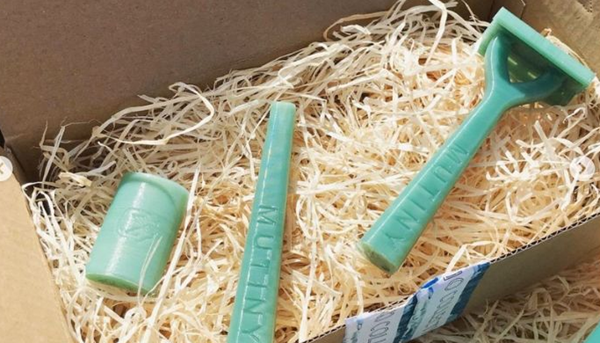

Photo credit: Fish silk
future,Fishy Filaments aims to increase its impact by expanding its recycling technology and product range. “Our mission is to reduce global carbon emissions through resource-efficient manufacturing. As an evolving manufacturing technology, additive manufacturing is a key customer segment and is uniquely positioned to move from material to material. another with relative ease and help technology users make environmentally conscious choices at the design level, and if we don’t do this, we will be forced to mass produce a lot of waste and waste. generally eliminate poor quality finished products. want to make positive choices available and visible for the ocean”
to use3D printing enables sustainable innovation in seafood
Coral restoration and recycling are notThe only advantage of 3D printing for ocean conservation. It is also used to solve one of the biggest problems facing our oceans: overfishing.
As we all know, global demand for seafood continues to put pressure on marine resources, prompting people to seek alternative sources of protein and adopt sustainable eating habits. The World Bank reports that more than90% of fish stocks are overexploited, and in recent decades, increased consumption has caused stocks of the most demanded fish species to fall below 50%. 3D printing technology enables the production of plant-based seafood alternatives that replicate the texture and nutritional content of traditional seafood, driving innovation in this area.
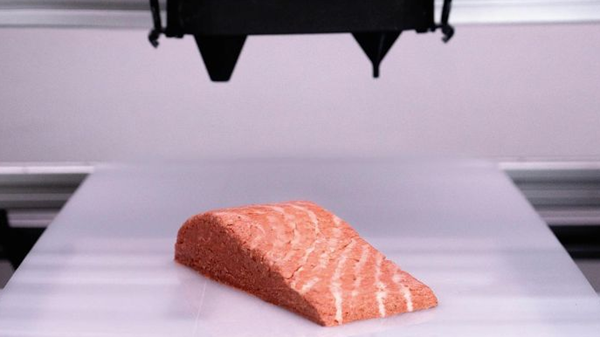

Revo Foods Fish Fillets (Photo credit: Revo Foods)
Companies such as Revo Foods are using 3D printing to advance the development of fish fillets and plant-based seafood alternatives. Using ingredients such as plant-based proteins and natural flavors, these products offer consumers a sustainable and ethical alternative to traditional seafood consumption, contributing to ocean conservation efforts. The scalability of 3D printing technology allows these products to be manufactured at scale, reducing reliance on fish stocks and easing pressure on marine ecosystems. “Our mission is to make food production more flexible and sustainable by developing modern food processing technologies,” the company said.
One of Revo Foods’ flagship products is a plant-based alternative to fillet, composed primarily of mycoproteins. Dubbed a “fermented superfood,” this innovative ingredient has a complete amino acid profile, making it a sustainable, nutrient-rich source of protein. This alternative promises to provide a sustainable protein capable of mimicking the texture and taste of fish fillet without environmental impact. Robin Simsa, CEO of Revo Foods, highlighted the benefits of this alternative, explaining: “Mycoprotein has a doubling time of only 5 hours, so it truly is a super protein for a sustainable food supply. »


A variety of 3D printed fish recipes from Revo Foods, including salmon, tuna and filet mignon recipes. (Photo credit: Revo Foods)
Also,Robin Simsa also highlighted the benefits of 3D food structures, especially for creating higher-level, complex products with new functions. He said: 3D food structures provide new opportunities for higher-level complex products with new functions. For example, by combining two different ingredients in a form or structure of our choosing, we can create new fiber tastes and textures that consumers have never tasted before. This is really exciting, because only with better products can we convince consumers to give these products a chance. “This capability allows them to create plant-based seafood products with a texture and taste close to traditional fish, encouraging consumers to adopt sustainable food choices.
Revo Foods plans to demonstrate the scalability of its technology within a few months with its first production facility, which is expected to be operational by August 2024. The company is preparing to launch its new advanced product Filet 2.0 to the market soon. Later. Additionally, it is not the only company in the field demonstrating the enormous potential of additive manufacturing to help solve problems related to overfishing by offering alternatives to customers.
The future of ocean conservation:3D printing and collaboration
Looking to the future,The integration of emerging technologies such as 3D printing, coupled with strengthened partnerships in various fields, will bring great hopes for advancing ocean sustainable development goals. Efforts from companies like Kind Designs, Artec, Fishy Filaments, and Revo Foods (among many others) demonstrate the potential of 3D printing to solve a variety of environmental challenges, including habitat restoration and plastic waste recycling for sustainable food production. These technologies not only provide immediate solutions, but also pave the way for long-term strategies for ocean conservation.
By continuing to develop and implement these cutting-edge solutions,3D printing can make significant progress in protecting and restoring our oceans, ensuring a healthier, more resilient future for marine ecosystems and the communities that depend on them. As collaboration and technological innovation grow, the potential for sustainable and effective ocean management becomes increasingly accessible.
Daguang focuses on providing solutions such as precision CNC machining services (3-axis, 4-axis, 5-axis machining), CNC milling, 3D printing and rapid prototyping services.
